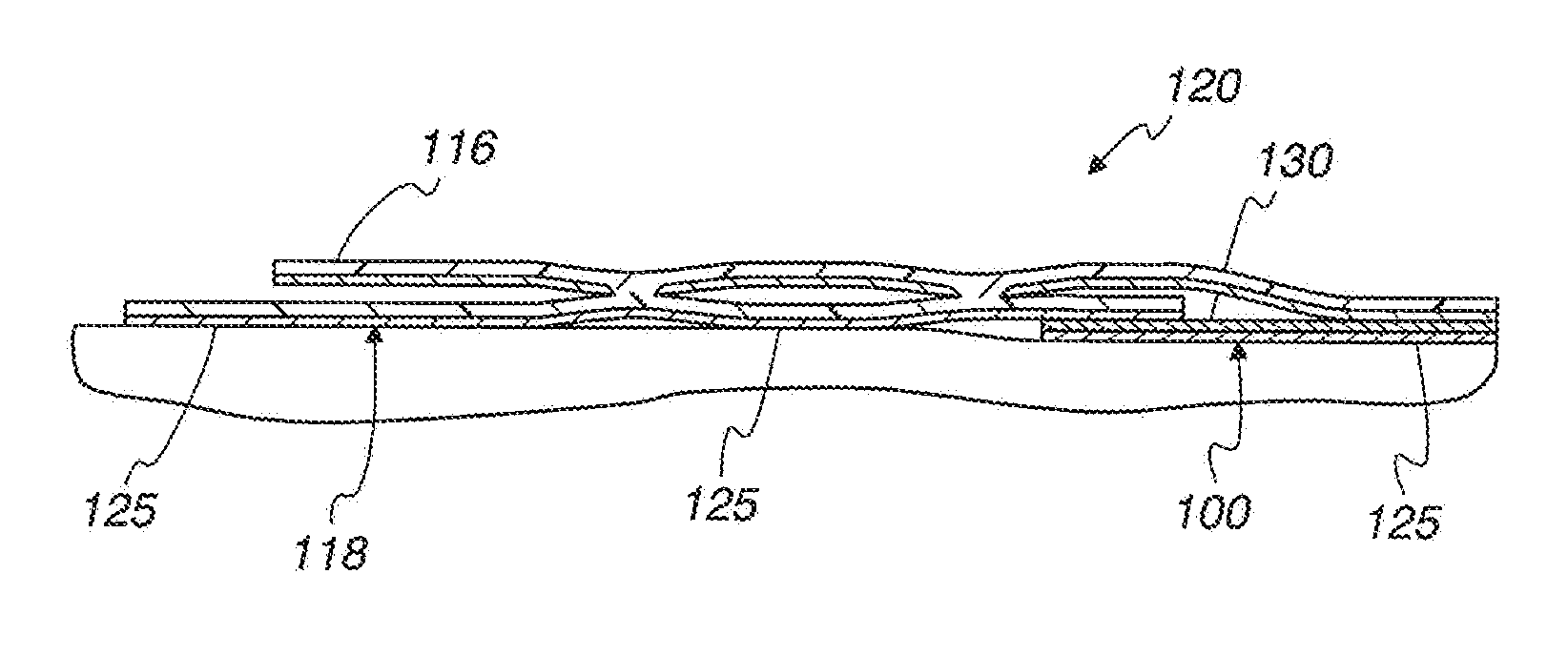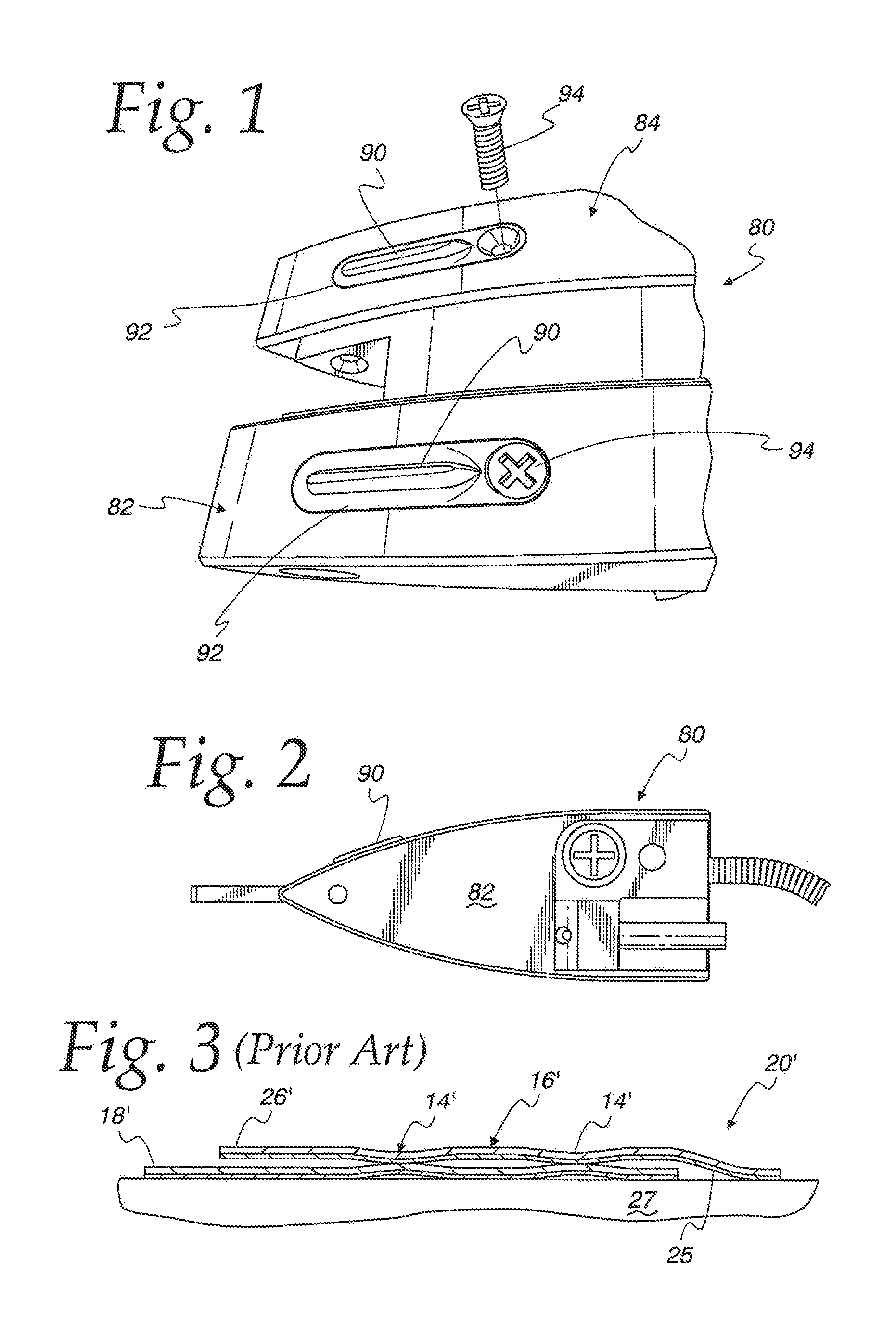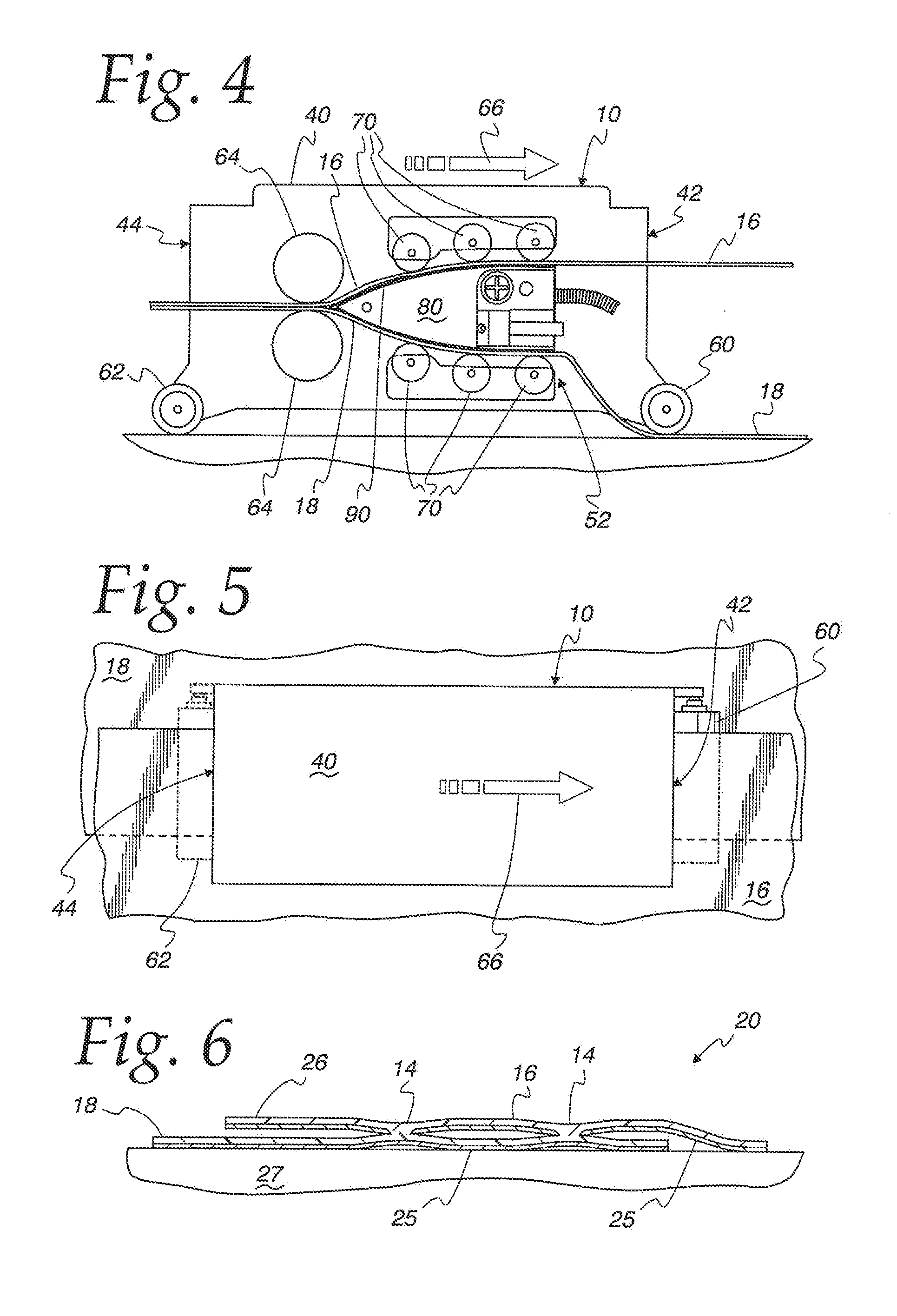Leak Detectable Geomembrane Liners and Method and Apparatus for Forming
a geomembrane lining and detection method technology, applied in the field of geomembrane linings, can solve the problems of unreliable electrical detection of leaks in the above described manner, high current density and localized anomalies, and damage to the lining, so as to maintain the overall structural integrity of the panel
- Summary
- Abstract
- Description
- Claims
- Application Information
AI Technical Summary
Benefits of technology
Problems solved by technology
Method used
Image
Examples
Embodiment Construction
[0042]A heat welding apparatus 10 is disclosed in the Figures which may be used in accordance with the present invention to heat weld seams 14 between geomembrane panels 16, 18 (typically, rolls of plastic sheet) used to form a liner 20 for, for example, large containment areas, referred to herein generally as containment systems,
[0043]The panels 16, 18 are geomembranes formed of a suitable leak proof non-conductive material having a suitable integral conductive lower surface 25. The lower conductive surfaces of the individual panels 16, 18 may also be interconnected with a series of conductive geomembranes, wires, or other conductive media in a grid pattern, or other materials suitable for connecting individual panels. Moreover, in accordance with the present invention, the formed seams 14 between panels 16, 18 maybe be suitably tested for leaks even after covered with, for example, water and / or soil, allowing performance of a reliable leak location survey
[0044]In particular, in ac...
PUM
| Property | Measurement | Unit |
|---|---|---|
| diameter | aaaaa | aaaaa |
| diameter | aaaaa | aaaaa |
| non-conductive | aaaaa | aaaaa |
Abstract
Description
Claims
Application Information
 Login to View More
Login to View More - R&D
- Intellectual Property
- Life Sciences
- Materials
- Tech Scout
- Unparalleled Data Quality
- Higher Quality Content
- 60% Fewer Hallucinations
Browse by: Latest US Patents, China's latest patents, Technical Efficacy Thesaurus, Application Domain, Technology Topic, Popular Technical Reports.
© 2025 PatSnap. All rights reserved.Legal|Privacy policy|Modern Slavery Act Transparency Statement|Sitemap|About US| Contact US: help@patsnap.com



